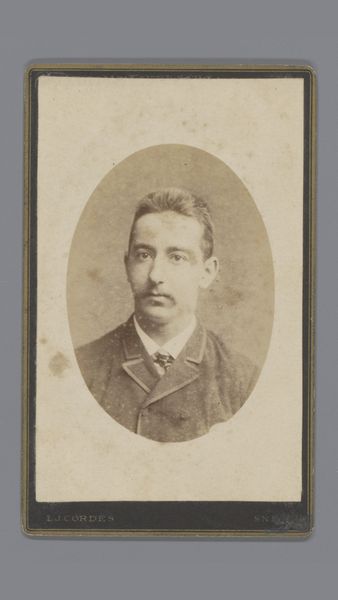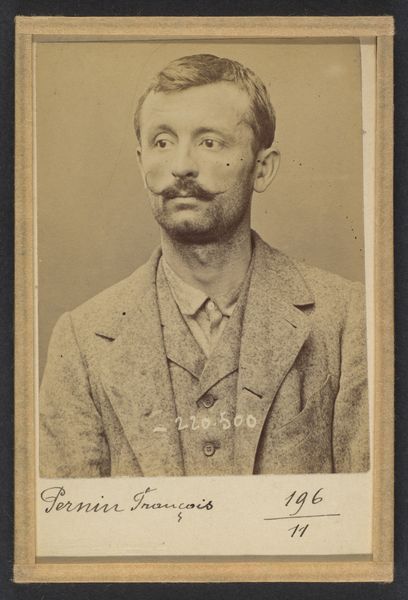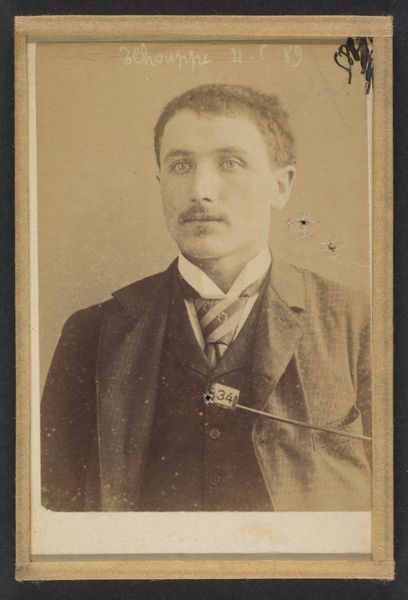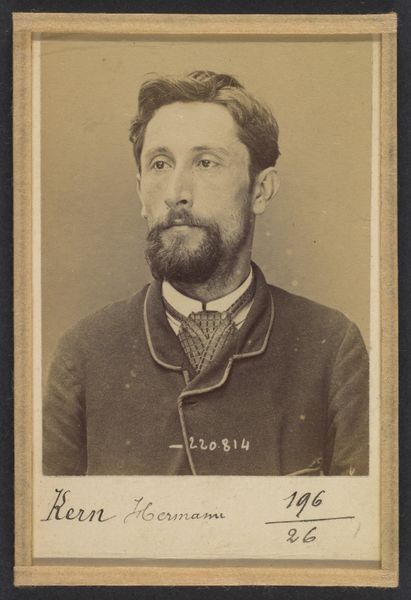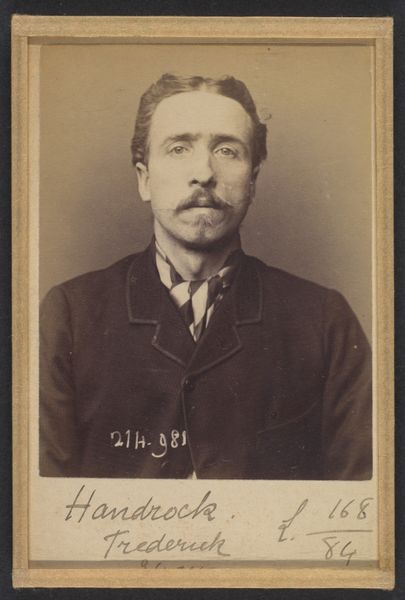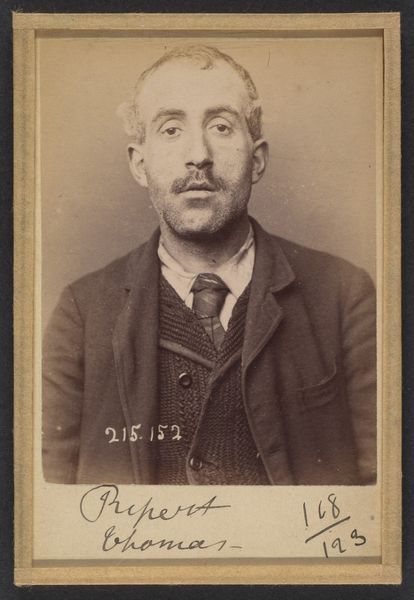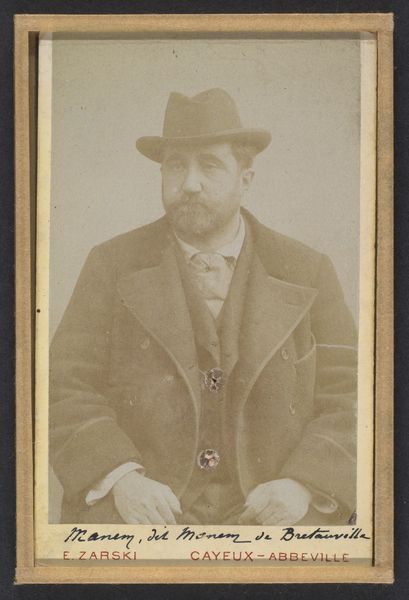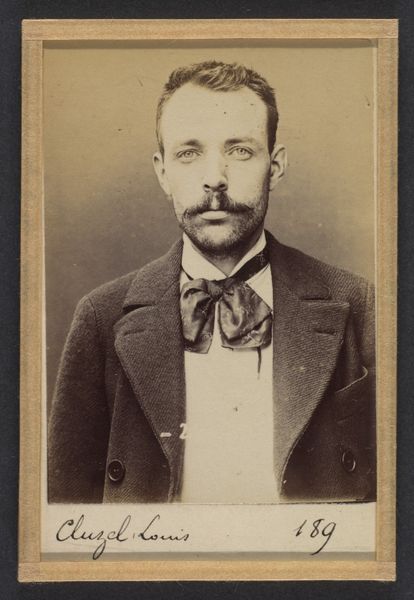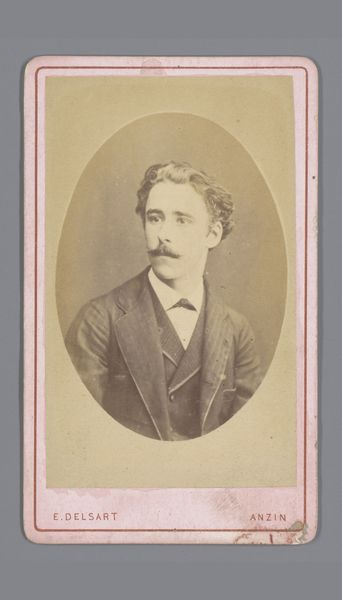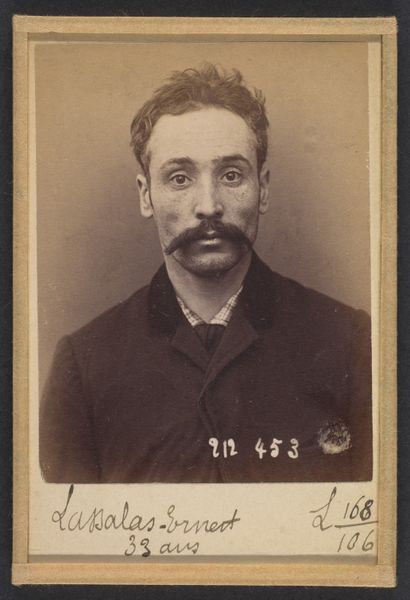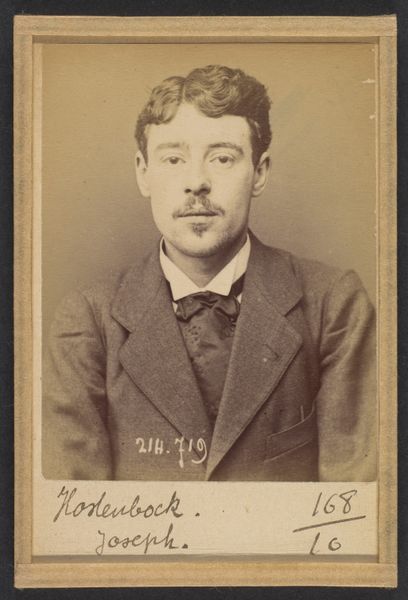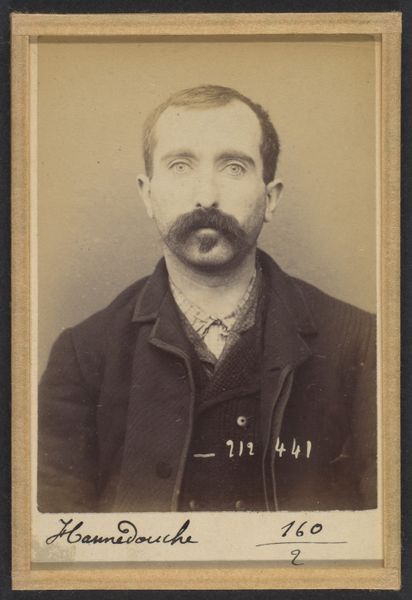
Gauche. Henri. 24 ans, né le 7/2/60 à Paris. Rentier. Anarchiste. 1884
0:00
0:00
photography
#
portrait
#
photography
#
genre-painting
#
academic-art
Dimensions: 10.5 x 7 x 0.5 cm (4 1/8 x 2 3/4 x 3/16 in.) each
Copyright: Public Domain
Editor: This is an 1884 photograph by Alphonse Bertillon, currently housed at the Metropolitan Museum of Art. The title is rather detailed: "Gauche. Henri. 24 ans, né le 7/2/60 à Paris. Rentier. Anarchiste." which gives the sitter's name, age, place of birth, occupation as "rentier," or someone who lives off investments, and his political leaning: anarchist. He seems rather well-dressed, perhaps even bourgeois, which feels contradictory to the label of 'anarchist'. How do you interpret this portrait, knowing these details? Curator: Well, isn't that the rub, the delightful contradiction baked right into the image? Bertillon wasn't just snapping a photo; he was building a system, a science even, of identifying and classifying criminals. Imagine him seeing Henri, this "rentier anarchiste," a bourgeois rebel. It's like a philosophical head-scratcher served on a silver platter! Does his carefully knotted cravat clash with his stated beliefs? Is he a dilettante dabbling in rebellion, or a true believer funding the cause with his inheritance? Bertillon must have felt like he’d caught lightning in a bottle. What does it suggest to you about how people perceived anarchism at the time? Editor: I guess I assumed anarchists would be from the working class, maybe laborers looking for a different system. It is interesting to think about someone of independent means, as the label 'rentier' suggests, aligning with such a cause. Maybe this speaks to the breadth of people who might want a more equitable and liberated society. Curator: Exactly! The beauty, or perhaps the terror, of anarchism lies in its lack of a single point of origin, a unifying dogma. Henri here embodies that delicious ambiguity. Think of the clash, the tension that he might feel within his role. It really makes one reconsider assumptions. Editor: Absolutely. Seeing him framed in this formal portrait style, with these hand-written details underneath, really invites us to think more deeply about stereotypes and preconceived notions, particularly those of marginalized groups. Thanks for highlighting that tension! Curator: My pleasure. Art's at its best when it holds a mirror up to our own biases, wouldn't you agree?
Comments
No comments
Be the first to comment and join the conversation on the ultimate creative platform.
